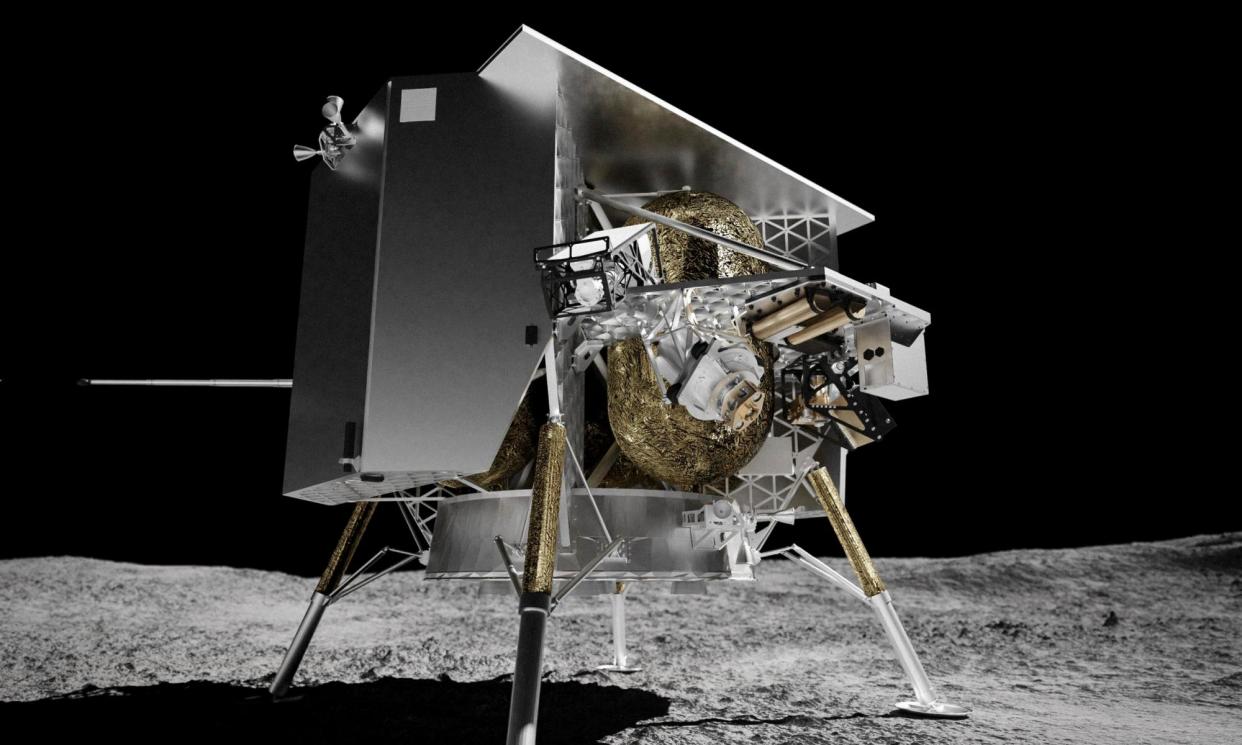Doomed Peregrine moon lander on course for fiery return to Earth

A US spacecraft that malfunctioned on the way to the moon will plunge back to Earth on Thursday evening and burn up in a fireball over the south Pacific Ocean.
A fuel leak onboard the Peregrine lander had made it challenging for space agencies to track the doomed spacecraft, but as the leak subsided in recent days its path became more predictable.
Based on the latest calculations, the lander will re-enter Earth’s atmosphere at about 2100 GMT on Thursday, with most of the spacecraft burning up to the east of Australia between New Caledonia and Fiji. The closest populated spot is Aneityum, the southernmost island of Vanuatu.
“The challenge with this specific object was the uncertainty of its precise orbital position due to the initial onboard venting of fuel,” said Angus Stewart, the head of space surveillance and tracking at the UK Space Agency. “Once that venting ceased, the orbit has become far more stable and we have been able to successfully track Peregrine.”
Predicting where and when space hardware will come down is particularly difficult for satellites in low orbit as they often belly surf the atmosphere for several laps of the planet before burning up. Because the Peregrine lander is coming in at a steeper angle, there is far less uncertainty.
Related: What happened to the Peregrine lander and what does it mean for moon missions?
“You get an infinitely better handle on where and when it will re-enter,” said Jonathan McDowell, an astrophysicist at the Harvard–Smithsonian Center for Astrophysics in Cambridge, Massachusetts.
How much of the spacecraft will survive re-entry is less clear, however. Peregrine is travelling much faster than a typical re-entering satellite, so will generate more heat as it shoots through the atmosphere. On the other hand, the steeper angle means it has less air to punch through.
As with all spacecraft crossing an increasingly congested low Earth orbit, Peregrine poses some risk to other spacecraft, but the chances of a collision are slim. “Our analysis, based on data from international partners, has not identified a risk to other space objects from Peregrine,” Stewart said.
Peregrine blasted off from Cape Canaveral in Florida on 8 January onboard a Vulcan Centaur rocket. The launch was flawless – not a given for a rocket’s maiden flight – but Peregrine developed a fuel leak soon after it was released from the rocket’s upper stage.
What caused the leak is unclear, but Astrobotic, the Pittsburgh firm that built the lander, believes a stuck valve led to a spike in helium pressure that ruptured the spacecraft’s oxidiser tank. The loss of propellant meant the lander had no chance of achieving a soft touchdown on the moon – a first for a private company – and while it looped out to lunar distance, it was soon pulled back on a collision course with Earth.
Astrobotic worked with Nasa and other US agencies to ensure as safe a re-entry trajectory as possible. To nudge Peregrine towards the South Pacific, the spacecraft performed 23 short burns with its main engine. Peregrine then rotated so the force from the leaking propellant helped steer the doomed spacecraft towards the ocean.
Despite the low risk from Peregrine, concerns remain about the threat space junk poses as launches become more frequent. Andy Lawrence, the regius professor of astronomy at the University of Edinburgh, said satellite launches were increasing exponentially and that many spacecraft that fell back to Earth did not burn up completely. “As well as the danger of large chunks landing in our gardens, it is increasingly likely that a small piece will hit an aircraft,” he said.

 Yahoo News
Yahoo News 
